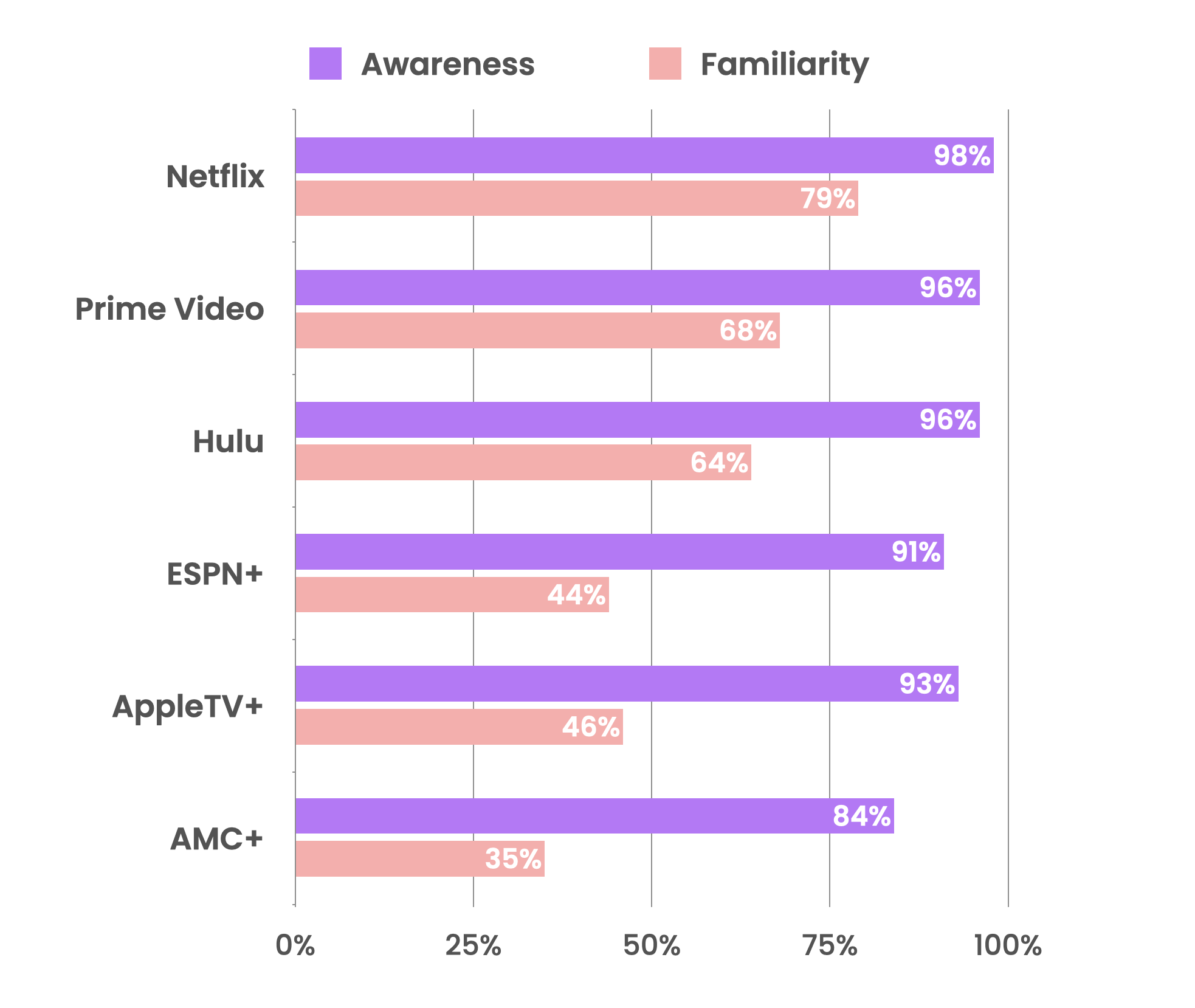The Insight
There’s a significant gulf between consumers aware of a given product or service (those who have heard of it), and those familiar with it (meaning they could explain the product or service, and what it offers, to someone else). Awareness by itself is insufficient to differentiate your product from competitors, or to enable consumers to act as brand advocates.
The Data
Let’s take the SVOD category as an example. An early 2022 Hub Entertainment Research study among US TV consumers found that while 9 out of 10 had heard of ESPN+, fewer than half (44%) said they understood it well enough to describe it to someone else. In fact, for all the brands surveyed, there’s a meaningful delta between those aware of a given service, and those familiar with it.
Implications
What does this mean for brands? Awareness campaigns, while less efficient on their own than lower-funnel efforts, must run alongside conversion / DR campaigns. In fact, we’ve found that brands or products with awareness campaigns drive greater efficiency in lower-funnel campaigns than those without.
While awareness media can be difficult to measure, here are some of the metrics we use to determine efficacy:
- Custom survey
- Vendor and/or independent brand lift study
- Sales growth in any heavy-up or test markets
- Google search trends
- Custom landing page / QR code for awareness assets
- CTV tracking
In Summary
With the worldwide economy in flux, consumers are making decisions more than ever on pricing and on value. This means brands must be very clear in their messaging and communicate to consumers exactly what they are, what value propositions they offer, and how they’re different from (and better than) competitive products or services.
 Source: Hub Entertainment Research, February 2022
Source: Hub Entertainment Research, February 2022



